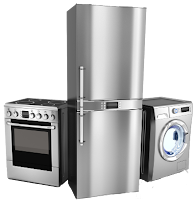In December 2024 the Italian government has approved the Italian Budget Law (Legge di Bilancio) for 2025. Some property related tax incentives, which were valid in 2024, have been reconfirmed for 2025. If you are a taxpayer in Italy, now is the time to start those home improvement jobs or renovations on your property, that you have been putting off. Most of these tax credits are to be used over the next 10 years, and in case you sell your house, the tax credit balance (for some types of incentives) can be transferred to the new owner. Let’s have a look at the different property related tax incentives.
Bonus Casa (Renovation bonus)
All taxpayers who are subject to personal income tax (IRPEF), or those who are residing in Italy, are entitled to the Renovation bonus, for renovation expenses incurred in 2025. The right to this tax credit is not limited to the owners only. Family members, who live with the owner, can also opt for this tax credit, if they hold the invoices and bank transfers related to the renovation work.
Those who renovate a property can take advantage of an IRPEF deduction of 50% with a maximum spending limit of 96,000 euro per real estate unit. (The deduction percentage will be reduce to 36% in 2026.) The deduction is divided into 10 annual instalments of the same amount. The first instalment can be deducted in the year in which the expenditure was incurred. For owners who are not resident in their home, that is, for the so-called second homes, the tax deduction percentage is 36% in 2025 and 30% from 2026.
Those who renovate a property can take advantage of an IRPEF deduction of 50% with a maximum spending limit of 96,000 euro per real estate unit. (The deduction percentage will be reduce to 36% in 2026.) The deduction is divided into 10 annual instalments of the same amount. The first instalment can be deducted in the year in which the expenditure was incurred. For owners who are not resident in their home, that is, for the so-called second homes, the tax deduction percentage is 36% in 2025 and 30% from 2026.
Ecobonus

Ecobonus is an income tax credit (IRPEF) for expenses incurred for the energy efficiency of your home in 2025. The deduction of the Ecobonus is valid for both residents and non-residents. The tax credit is spread over a period of 10 years with a maximum spending limit of 30,000 to 100,000 euro, depending on the type of intervention. You are entitled to a different percentage of Ecobonus tax deduction, again depending on the type of intervention. If you sell your home, the remaining tax credit has to be transferred to the new owner.
All interventions qualify for 50% tax credit: doors and windows, solar shading, biomass boilers and class A condensation boilers, total energy requalification of the building, advanced thermal adaptation system, hot air heaters with condensation technology, heat pumps, heat pump water heaters, building envelope insulation, solar thermal collectors, stand-alone power system, micro-CHP. For the second homes the tax deduction percentage has been reduced to 36% in 2025 and 30% from 2026.
All interventions qualify for 50% tax credit: doors and windows, solar shading, biomass boilers and class A condensation boilers, total energy requalification of the building, advanced thermal adaptation system, hot air heaters with condensation technology, heat pumps, heat pump water heaters, building envelope insulation, solar thermal collectors, stand-alone power system, micro-CHP. For the second homes the tax deduction percentage has been reduced to 36% in 2025 and 30% from 2026.
Sismabonus (Seismic Bonus)
The Sismabonus is an income tax credit for expenses incurred for seismic security interventions on buildings which are situated in high-risk areas (zone 1 and 2) and since 2019 also in zone 3. The deduction of the Sismabonus is valid for costs incurred from 1 January 2017 until 31 December 2027. You are entitled to a tax deduction of 50% of the expenses if the interventions carried out lead to a reduction of one seismic design category.
The Sismabonus has a maximum spending limit of 96,000 euro per real estate unit and must be divided into five annual instalments of the same amount. The first instalment can be deducted in the year in which the expenditure was incurred. For second homes the tax reduction percentage is 36% in 2025 and in 2026 it will be 30%. For residents it will be 36% from 2026.
The Sismabonus has a maximum spending limit of 96,000 euro per real estate unit and must be divided into five annual instalments of the same amount. The first instalment can be deducted in the year in which the expenditure was incurred. For second homes the tax reduction percentage is 36% in 2025 and in 2026 it will be 30%. For residents it will be 36% from 2026.
Bonus Mobili e Elettrodomestici (furniture and home appliances bonus)
The furniture and home appliances bonus consists of a 50% tax reduction on a maximum expenditure of 10,000 euro for the purchase of furniture and class A+ home appliances (class A for ovens) in 2025. The bonus is divided into 10 equal instalments. The first instalment can be deducted in the year in which the expenditure was incurred.
The tax reduction, which applies for the purchase of furniture and appliances for the house which is being renovated. Your purchases have to be paid for by bank transfer or by credit card.
You can take advantage of the furniture and home appliances bonus for the purchase of ovens (energy rating A) and appliances with energy rating A+ like refrigerators, freezers, washing machines, tumble dryers, dishwashers and cooking hobs. Televisions are excluded.
The tax reduction, which applies for the purchase of furniture and appliances for the house which is being renovated. Your purchases have to be paid for by bank transfer or by credit card.
You can take advantage of the furniture and home appliances bonus for the purchase of ovens (energy rating A) and appliances with energy rating A+ like refrigerators, freezers, washing machines, tumble dryers, dishwashers and cooking hobs. Televisions are excluded.
New bonus for the purchase of high-efficiency appliances in 2025
In 2025, a contribution will be introduced to end users for the purchase of very energy-efficient household appliances. The aim is to support industrial competitiveness, employment and domestic energy efficiency. The contribution is equal to 30% of the purchase price of the device, with a maximum of 100,00 euros per purchase. The subsidized amount is 200,00 euros for families with an ISEE of less than 25,000 euros.
Bonus Architectural Barriers
NEW since 2024. This bonus can only be applied to the implementation of interventions involving stairs, ramps, lifts, stair lifts and lifting platforms and the bonus is limited to existing buildings. The premium is worth 75% of the expenses for removing architectural barriers.
Bonus Verde (Green bonus)
The green bonus was introduced in 2018 and has been reconfirmed for the last time in 2024. This bonus allowed you to deduct 36% of the costs incurred for the care, renovation and irrigation of private green areas. In 2025 this bonus has not been renewed.
For most bonuses, maximum spending limits apply and all invoices must be paid by bank transfer or credit card.
It is recommended that you read the conditions of each bonus carefully before you engage a builder to do the renovation work on your home.


